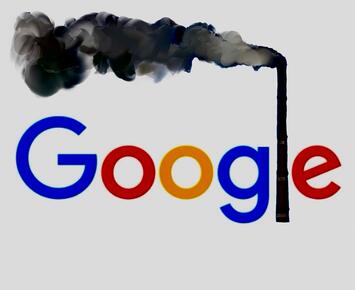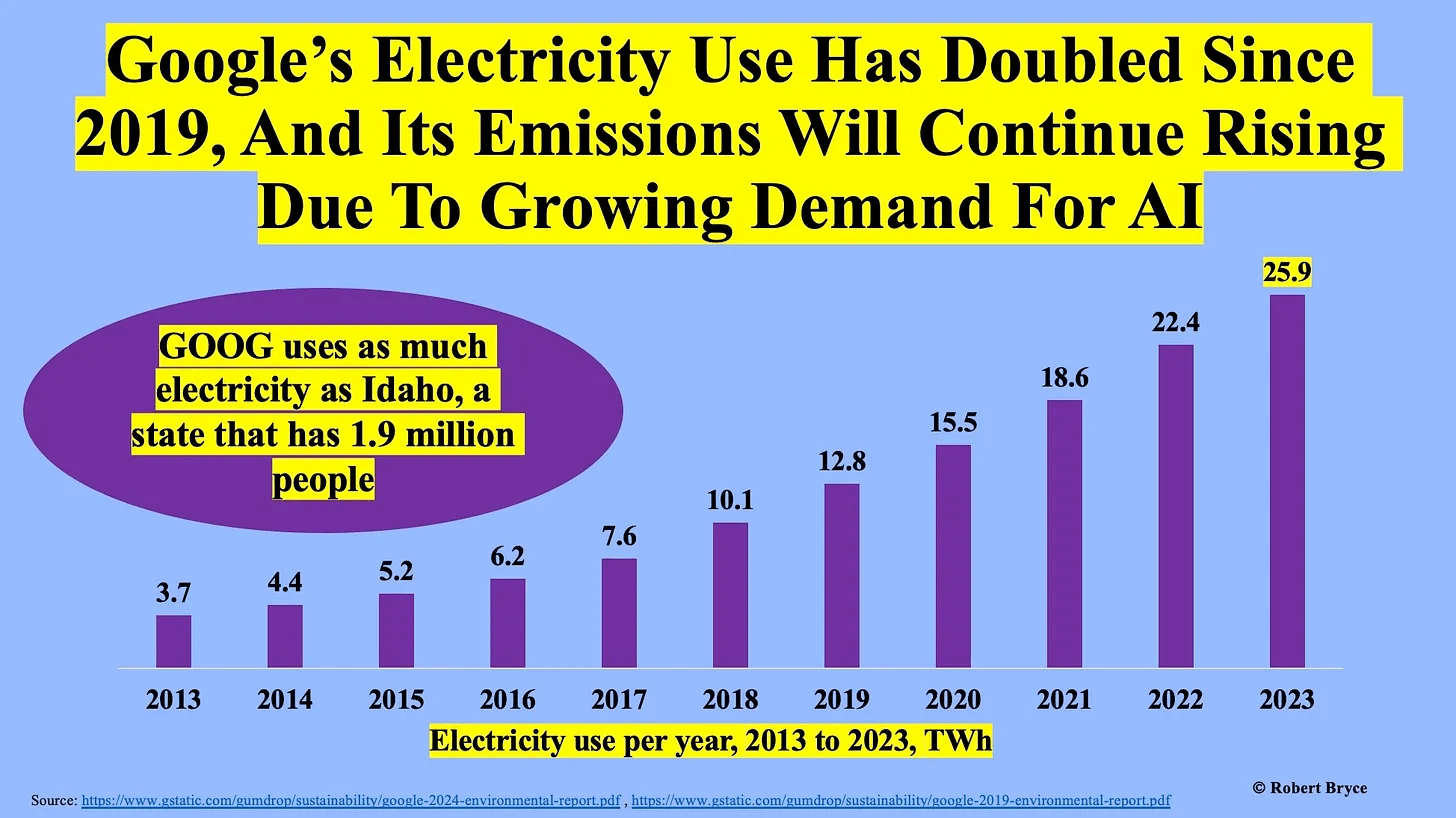
In 2017, Google declared it had reached “100% renewable energy for our global operations.” The company continued, “Google became carbon neutral in 2007, and since then, our carbon footprint has grown more slowly than our business — proof, 10 years later, that economic growth can be decoupled from environmental impact and resource use.”
That “decoupling” didn’t last long.
In fact, since 2017, Google’s environmental reports show that the company’s electricity use, CO2 emissions, and carbon intensity have soared. The most recent numbers came out last Tuesday when the search and advertising colossus released its 2024 environmental report. And the numbers don’t lie. As seen in the chart below, since 2017, CO2 emissions at Google have jumped four-fold to a company record of 14.3 million tons in 2023.

Why does this matter? There are many reasons. First among them: Google has been among the most aggressive promoters of the notion that it was a different kind of company, a “clean” industry from Silicon Valley that wouldn’t pollute like old industrial companies such as U.S. Steel or ExxonMobil. But the latest numbers show that Google is, at root, an industrial company that relies on massive digital foundries — that’s a better description than the anodyne “data centers” — that use staggering quantities of juice. Further, the company’s electricity needs could never be supplied by wind and solar alone. Or to put it bluntly, Google’s claims about decoupling itself from the realities of the physical world and the vagaries of electric grids were little more than corporate greenwashing.
Second, Google isn’t just a giant of Big Tech, it’s among the most dominant corporations of our era. It controls 92% of the search engine market. For comparison, Microsoft’s Bing has a 3% share. Google is the world’s most-visited website. Coming in at number two is YouTube, which is owned by Google, or rather, by the parent company, Alphabet. Thus, whether we like it or not, Google has become interwoven with our online experiences, and as shown in the chart below, those experiences have a growing carbon footprint.
What’s driving the increase? Its new report says emissions grew by 13% in 2023, “primarily driven by increased data center energy consumption and supply chain emissions.”
Read the rest of this piece at Robert Bryce Substack.
Robert Bryce is a Texas-based author, journalist, film producer, and podcaster. His articles have appeared in a myriad of publications including the Wall Street Journal, New York Times, Forbes, Time, Austin Chronicle, and Sydney Morning Herald.
Photo: courtesy Robert Bryce Substack.












